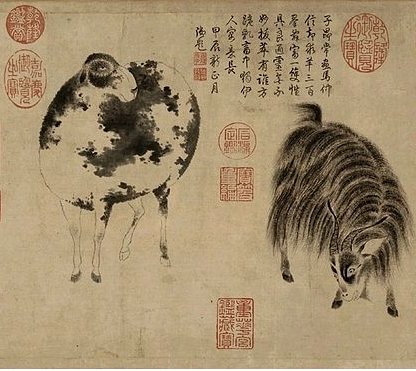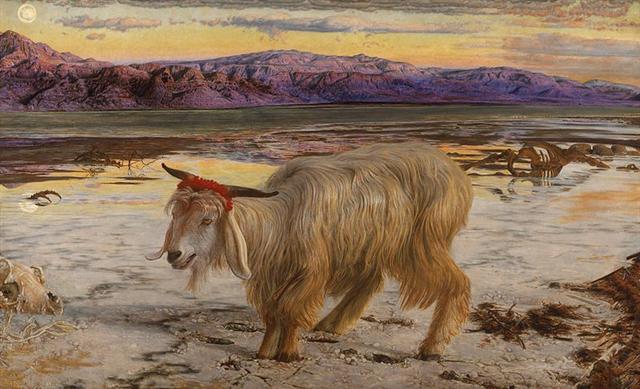3. The last K glyph in 'July is number 68. In G number 68 is a great manu rere, in K the figure is a great honu, possibly signifying sky respectively sea. And 3 * 8 = 4 * 6 = 24. In G the multiplications in line a3 are based on 3, while in K they are based on 4. The parallel glyphs can therefore hardly have exactly the same meanings.
4 glyphs at the beginning of 'August could constitute a group:
The henua signs in front in Ka4-7 and Ka4-10, with 3 climbing respectively 2 horizontal internal lines, have their top ends not straight but concave, the same as how the little one in front in Ga3-2 is designed:
Perhaps we should read a contrast between the concavity at the top of henua in Ga3-2 and the bulging front of the little marama in Ka3-18. Perhaps these signs mean hunger respectively good crops: ... The generally accepted version of the Rehua myth, according to Best, is that Rehua had two wives, the stars on either side of Antares. One was Ruhi-te-rangi or Pekehawani, the personification of summer languor (ruhi), the other Whaka-onge-kai, She-who-makes-food-scarce before the new crops can be harvested ... Beyond the manzil Alhena comes the Murzim manzil, ruled by Canis Major. The pair of birds which could represent Castor and Pollux are once again united (in the heuheu glyph). They have fishy tails and both are looking ahead instead of forming a bridge (which ought to be the opposite of the Janus sign):
I speculated, in chapter Ka5, if the looking ahead feature can be explained as due to the position: ... The heuheu glyph in K is open and at the wrong place, which necessitated a birth entrance hole in Ka4-13 ...
If the heuheu type of bird pair represents the Gemin twins - who had different fathers - it could indeed be reasonable to use heuheu as a label for this type of glyph. The double heu could indicate a negative, i.e. not separated:
Metoro never said heuheu in his readings and the glyph label heuheu is my own invention. Occasionally he said heu or heheu at glyphs where he possibly meant hair. To my mind comes such myths which relate how one of a pair of 'twins' was hairy and the other not: "... it is told that he [Gilgamesh] lives in splendor and dissoluteness, and makes a nuisance of himself until the gods bring relief to the people by rearing a human being, either twin or counterpart, who can stand up to him. It is Enkidu, the man of the Wilds, a kind of wolf-child as simple as the beasts he plays with, a happy son of nature, hairy all over, grown to enormous strength ... Actually, the goddess Aruru makes him 'in the likeness of Anu', literally 'a zikru of Anu she conceived in her heart.' But Enkidu is also said to look like Gilgamesh 'to a hair' ..." (Hamlet's Mill) The idea of hairy contra naked for the pair of contrasting seasons, winter respectively summer - combined with such associations as water (cold) respectively warmth (fire) - will result in 'bad' respectively 'good'. The bad winter season was personified as a hairy goat:
... If at autumn equinox 'Land' threatens to sink into the 'Sea' - as when ebb turns into high tide - then the mountain tops will never vanish. The goats will survive ... ... It might be argued that also goats need firm footholds. Yes, but mountain goats are not inhabiting the agricultural plains of man. The mountain (mauga, see at The Week) is a sign of hiding, of darkness (and of old age). 'Jewish sources in the Talmud (Yoma 6:4,67b) give the etymology of azazel ['scapegoat'] as a compound of 'az', strong or rough, and 'el', mighty, that the goat was sent from the most rugged or strongest of mountains. From the Targums onwards the term azazel was also seen by some rabbinical commentators as the name of a Hebrew demon, angelic force, or pagan deity.' The yearly expulsion of the Scapegoat, who was to blame for the bad times, became a Sign of summer arriving. Enkidu was not allowed to live on but he had to die, like Castor.  On Easter Island there were no goats and presumably the parallel to the hairy creature was a beast (manu) with feathers. The activities described by Barthel for He Maro and He Anakena are the same: ... Because of the cold weather, nothing grows (tupu meme), and there is hardly any work done in the fields. Hens grow an abundance of feathers, which are used for the festivities. The time of the great festivities begins, also for the father-in-law (te ngongoro mo te hungavai). There is much singing (riu) ... ... He Maro and He Anakena are not Te months, Sun is not present. The little word he implies a 'verb' and not a 'substantive' (although such a classification is totally out of place in the Polynesian grammar) ... | |||||||||||||||||||||||||||||||||||||||||||||||||||||||||||||||||||||||||||||||||||||||||||||













